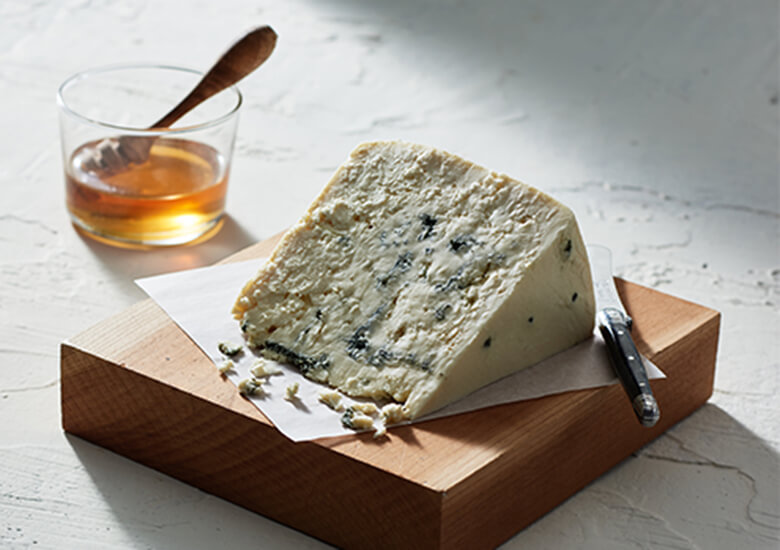Cheese mold is an all-too-common problem that can turn a delicious snack into a frustrating waste of money. The high moisture and organic content in cheese create the perfect environment for mold spores to thrive, making mold growth inevitable if not managed properly. With the right storage techniques and a bit of knowledge, you can extend your cheese’s shelf life and keep it fresh and flavorful. Let’s dive into some simple, effective ways to prevent mold on cheese and ensure it stays in prime condition.

Understanding Why Cheese Develops Mold
Cheese is susceptible to mold because of its porous structure and moisture content, which allows mold spores to settle and grow easily. Not all molds are bad—some cheeses are intentionally molded, like blue cheese, to enhance flavor and texture. However, unwanted mold on store-bought cheese can spoil the taste, texture, and safety of your cheese. This issue is exacerbated by poor storage conditions, such as high humidity and improper wrapping, which encourage mold to flourish. Understanding these basics will help you better manage and store your cheese to prevent mold growth.
Cheeses Prone to Mold: Which Ones Need Extra Care?
Certain cheeses are more mold-prone due to their softness and higher moisture levels, such as ricotta, Brie, and mozzarella. These cheeses need careful handling because they spoil more easily than harder cheeses. Conversely, hard cheeses like Parmesan and aged cheddar have lower moisture content, making them less susceptible to mold. However, they aren’t immune—improper storage can lead to mold even on hard cheeses. Knowing which cheeses need extra attention can help you determine the best storage techniques.
Proper Storage Techniques to Keep Cheese Fresh
The way you store cheese is crucial for preventing mold. Follow these simple tips to extend your cheese’s shelf life:
- Refrigerate Correctly: Always store cheese in the refrigerator, as cool temperatures slow down mold growth. The ideal temperature for most cheeses is between 35°F and 45°F (2°C and 7°C).
- Choose the Right Spot: Place your cheese in the vegetable crisper or a designated cheese drawer if available. These areas maintain a stable temperature and humidity level, reducing the likelihood of mold.
- Avoid Storing Near Smelly Foods: Cheese easily absorbs odors, so keep it away from foods with strong smells like onions and garlic.
By keeping your cheese in the fridge, in a spot with controlled temperature and humidity, you’ll make it less inviting for mold to grow.
Best Wrapping Methods to Prevent Cheese Mold
The material you use to wrap cheese makes a significant difference. Proper wrapping can create a barrier that keeps mold at bay while allowing the cheese to breathe.
- Use Wax or Parchment Paper: These materials allow air to circulate, which prevents moisture buildup that leads to mold. Wrap your cheese first in wax or parchment paper, then in plastic wrap or aluminum foil for added protection.
- Avoid Airtight Plastic Wrap: While plastic wrap is convenient, it traps moisture, creating a breeding ground for mold. Only use plastic wrap as an outer layer and not as the primary wrapping material.
- Consider Cheese-Specific Paper: Cheese paper is specially designed to maintain the right moisture level, and it’s an excellent investment if you frequently store cheese.
The goal is to keep the cheese from drying out while still allowing it to breathe. These wrapping techniques will go a long way in preserving its quality.

Controlling Humidity and Temperature for Longer Shelf Life
Cheese needs a delicate balance of humidity and temperature to stay fresh. While too much humidity causes mold, too little can dry out the cheese, altering its texture and taste.
- Aim for Moderate Humidity: Cheese thrives at around 75% to 85% humidity. Too little will dry it out, while too much will encourage mold.
- Use a Cheese Storage Container: These containers create a controlled environment, especially useful for softer cheeses. Cheese domes or specially designed cheese storage boxes work well for delicate varieties, providing the right balance of humidity and air circulation.
Smart Habits for Extending Cheese Shelf Life
Small changes in handling and storage habits can prevent mold and make your cheese last longer:
- Buy Smaller Portions: Purchase only what you’ll use within a week or two. The less time cheese sits in your fridge, the less chance mold has to grow.
- Use Clean Utensils: Every time you cut or serve cheese, use a clean knife to avoid introducing bacteria and mold spores.
- Rewrap After Each Use: Properly rewrap cheese immediately after each use to maintain its freshness. If cheese is left unwrapped, it can dry out and mold more easily.
By following these steps, you’ll avoid waste and keep your cheese tasting fresh and delicious for longer.
Handling Mold If It Appears on Your Cheese
Despite your best efforts, mold may still appear. Here’s how to handle it safely:
- For Hard Cheeses: If mold appears on hard cheeses like cheddar or Parmesan, cut away the moldy part. Remove at least an inch around and below the moldy area to ensure no spores are left.
- For Soft Cheeses: Unfortunately, with high-moisture cheeses like Brie or ricotta, mold can penetrate deeply. It’s safer to discard these cheeses once mold appears since removing the surface mold won’t eliminate spores inside.
When in doubt, it’s better to err on the side of caution. Inspect cheese regularly, and if you’re unsure whether it’s still safe, it’s best to discard it.

Tips for Homemade Cheese Preservation
If you make cheese at home, cleanliness and proper curing practices are essential to prevent mold:
- Sterilize Equipment: Mold spores thrive on unclean surfaces. Ensure all tools, containers, and countertops are sterilized before use.
- Control Curing Environment: During curing, maintain steady temperature and humidity. Cover homemade cheese with cheese paper or wax for additional protection against mold.
Following these practices will help ensure your homemade cheese ages beautifully without developing unwanted mold.
Caring for Rare or Delicate Cheeses
Rare or delicate cheeses require extra care:
- Store Separately: Keep these cheeses away from other varieties to prevent cross-contamination.
- Limit Handling: Only cut these cheeses when necessary, and use designated tools to avoid transferring flavors or bacteria.
- Remove from Fridge Before Serving: Allow delicate cheeses to come to room temperature briefly before serving to enhance their flavor and texture.
These cheeses are best savored when treated with care, and small steps in storage and handling will help you enjoy their unique flavors longer.
Conclusion: Keep Mold at Bay with Proper Cheese Storage
Mold on cheese may be a common issue, but it’s one you can easily manage with a few simple practices. Understanding which cheeses need extra care, using the right wrapping materials, and storing at the ideal temperature and humidity will help you prevent mold and enjoy fresh cheese longer. By forming smart storage habits and handling mold correctly, you’ll save money and get the most flavor out of every bite. Remember, cheese is meant to be savored, not wasted, so a little care goes a long way in keeping your cheese mold-free!


